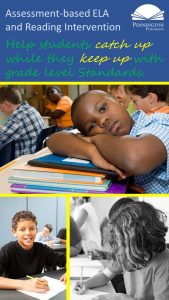Reading Fluency Assessment
It’s back to school and good teachers want to know if their students can read the class novel, assigned articles, or their textbooks. Teachers also want to know what level reading is appropriate for each of their students. Teachers need a reading fluency assessment that matches their curriculum. With the move to more and more informational/expository reading, it makes sense to assess students’ reading fluency accordingly. Wouldn’t it be great if you found a two-minute, numbered reading fluency that was leveled, at say first through seventh grade reading levels, did not require prior knowledge, was interesting, and was expository text, and was FREE? Here you go!
This “Pets” expository fluency article is leveled in a special pyramid design: Using the Fleish-Kincaid formula, the first paragraph is at the first grade reading level; the second paragraph is at the second grade level; the third paragraph is at the third grade level; the fourth paragraph is at the fourth grade level; the fifth paragraph is at the fifth grade level; the sixth paragraph is at the sixth grade level; and the seventh paragraph is at the seventh grade level.
With this design, the reader begins at an easier level to build confidence and then moves to more difficult academic language, longer sentences, and multi-syllabic words. As the student reads the article, the teacher notes the reading levels at which the student has a comfortable degree of accuracy and automaticity. Accuracy at the 95% or better decoding and automaticity with relatively effortless reading. The 383 word “Pets” expository fluency article is a two-minute expository reading fluency, which is a much superior measurement than a one-minute narrative reading fluency at only one grade level.
High levels of reading fluency are positively correlated with high levels of comprehension. Although not a causal connection, it makes sense that a certain degree of effortless automaticity is necessary for any reader to fully attend to meaning-making.
Following are end-of-year expected reading fluency rates (Hasbrouk, Tindal):
The Pets Fluency Assessment is my gift to you and your students. But, how do I best remediate reading fluency deficits? Pennington Publishing’s Reading Fluency and Comprehension Toolkit (a slice of the comprehensive Teaching Reading Strategies reading intervention program) includes 43 animal fluency articles with vocabulary to pre-teach. Word counts are provided in the left margin for fluency timings. The YouTube videos of each article are recorded at three different reading speeds (Level A at 95-115 words per minute; Level B at 115-135 words; and Level C at 135-155 words) to provide modeled readings at each of your students’ challenge levels.
Why not get this assessment plus 12 other reading assessments AND all of the instructional resources to teach to these assessments?

The Science of Reading Intervention Program
The Science of Reading Intervention Program: Word Recognition includes explicit, scripted instruction and practice with the 5 Daily Google Slide Activities every reading intervention student needs: 1. Phonemic Awareness and Morphology 2. Blending, Segmenting, and Spelling 3. Sounds and Spellings (including handwriting) 4. Heart Words Practice 5. Sam and Friends Phonics Books (decodables). Plus, digital and printable sound wall cards and speech articulation songs. Print versions are available for all activities. First Half of the Year Program (55 minutes-per-day, 18 weeks)
The Science of Reading Intervention Program: Language Comprehension resources are designed for students who have completed the word recognition program or have demonstrated basic mastery of the alphabetic code and can read with some degree of fluency. The program features the 5 Weekly Language Comprehension Activities: 1. Background Knowledge Mentor Texts 2. Academic Language, Greek and Latin Morphology, Figures of Speech, Connotations, Multiple Meaning Words 3. Syntax in Reading 4. Reading Comprehension Strategies 5. Literacy Knowledge (Narrative and Expository). Second Half of the Year Program (30 minutes-per-day, 18 weeks)
The Science of Reading Intervention Program: Assessment-based Instruction provides diagnostically-based “second chance” instructional resources. The program includes 13 comprehensive assessments and matching instructional resources to fill in the yet-to-be-mastered gaps in phonemic awareness, alphabetic awareness, phonics, fluency (with YouTube modeled readings), Heart Words and Phonics Games, spelling patterns, grammar, usage, and mechanics, syllabication and morphology, executive function shills. Second Half of the Year Program (25 minutes-per-day, 18 weeks)
The Science of Reading Intervention Program BUNDLE includes all 3 program components for the comprehensive, state-of-the-art (and science) grades 4-adult full-year program. Scripted, easy-to-teach, no prep, no need for time-consuming (albeit valuable) LETRS training or O-G certification… Learn as you teach and get results NOW for your students. Print to speech with plenty of speech to print instructional components.


